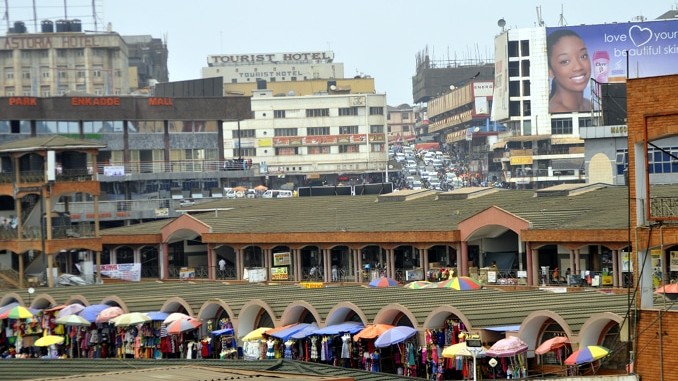
A survey of commercial banks shows that a good number of them have cut their prime lending rate, a sign that Bank of Uganda’s rate cuts are having an effect.
Barclays Bank Uganda yesterday announced a 0.5% reduction in its prime lending rate to become effective on 22 September. The rate will drop to 23.5% from its current 24%. And just last week, Stanbic Bank Uganda announced that it will start lending at 22% on 1 October from the current 23%.
“The bank has decreased rates on the back of a decreasing inflation trend observed over the last six months, a stable UGX/USD exchange rate year to date, and a steady decline in market rates year to date,” Barclays Communications Manager, Robinah Mukasa Kamuntu, wrote in a note.
Several other commercial banks contacted by Uganda Business News said they had also cut lending rates. DFCU’s is currently at 24% from 25% in July when the central bank last published interest rates and bank charges charged by Uganda’s 24 commercial banks. Orient Bank’s prime lending rate has been reduced to 24.5% effective 1 October from the current 25.5%; it was 26% in July. Finance Trust Bank has also cut its lending rate to 25% effective 1 October from 26%; this will affect new loans only, however, a bank representative said.
Crane Bank said its prime lending rate is 25% versus 27% in July. “This is the lowest rate at which the bank can lend meaning this percentage can only be revised upwards,” a statement from the bank said.
And Bank of Baroda will, starting 1 October, lower its prime lending rate for loans upto Shs20 million to 22.25% from the current 23% and 23.25% for loans above Shs20 million from the current 24.25%.
| Change in Commercial Bank PLR since July | ||
| Bank | Rate in July | Current/Proposed Rate |
| ABC Capital | 25% | – |
| Bank of Africa | 25% | 25% |
| Bank of India | 23% | – |
| Barclays | 24.50% | 23.50% |
| Baroda | 23% | 22.25% |
| Cairo | 23% | – |
| CBAU | 25.50% | 25.50% |
| Centenary | 23% | 23% |
| Crane | 27% | 25% |
| DFCU | 25% | 24% |
| Diamond | 26% | – |
| Ecobank | 25% | – |
| Equity | 25% | – |
| Finance Trust | 26% | 25% |
| GTBank | 26% | 26% |
| Housing | 24% | – |
| Exim | 24% | – |
| KCB | 25% | – |
| NC Bank | 25% | – |
| Orient | 26% | 24.50% |
| Stanbic | 23% | 22% |
| Standard | 25% | – |
| Tropical | 22% | – |
| UBAU | 24% | 24% |
The cuts show that the central bank’s three consecutive rate cuts – on account of its improved near-term inflation outlook – are being followed by commercial banks.
Related: Bank of Uganda cuts interest rate to 14%
Inflation fell to its lowest level in 16 months, coming in at 4.8% for the year ended August, while core inflation, which is targeted by the central bank, also fell to 4.9% year-on-year, just below the policy target of 5%.
The fall in inflation happened faster than the central bank’s projections; August’s Monetary Policy Report said inflation is expected “to converge to the medium-term target of 5% by December 2016.”
Related: August’s inflation is the lowest in 16 months
A stronger shilling since October last year is responsible for the downward trajectory in inflation, according to the report. The bank also said it expects the shilling to hold its own against the dollar for the rest of the year.
Not all banks have cut their rates, however. Centenary Bank is maintaining its prime lending rate at 23% (the rate is “negotiable depending on the type, loan amount and the repayment period,” a bank official said) as is United Bank for Africa (UBA) Uganda at 24%. Bank of Africa Uganda has also maintained its rate at 25%.
Guaranty Trust Bank Uganda said its prime lending rate has been maintained at 26%, but with a -1% or -2% provision for some facilities. “At the moment we have not yet revised it, but probably in a month or two,” a bank representative said.
Commercial Bank of Africa (Uganda) has also maintained its prime lending rate at 25.5% since last year. An official however told Uganda Business News that it is “going to be reviewed.”
August’s Monetary Policy Report said “lending to the business services sector which is largely comprised of Small Medium Enterprises (SMEs) continued to drop” in the three months to June 2016. Most banks are reluctant to lend because there has been an increase in defaults. Credit growth in the first half of 2016 averaged 3.9% versus 9.6% in the same period of 2015, the report said.
The central bank hoped that a reduction in its benchmark rate would lead to a fall in commercial bank lending rates and likely “result in higher credit growth.”
Central bank officials have however been keen to stress that the relationship between high interest rates and low private sector credit growth is thin. The August Monetary Policy Report faults subdued economic activity and higher provisions for bad loans by banks.
Relatedly, the Deputy Central Bank Governor recently said that “only 0.3% of the non-performing loans (NPLs) as of March 2016 could be attributed to very high interest rates.” Instead, he put the blame on misuse of loans by borrowers, the government’s delay in paying suppliers, and cost overruns and insufficient cash flows in businesses.
Related: Too big to fail? The 65 firms government wants to bail out






